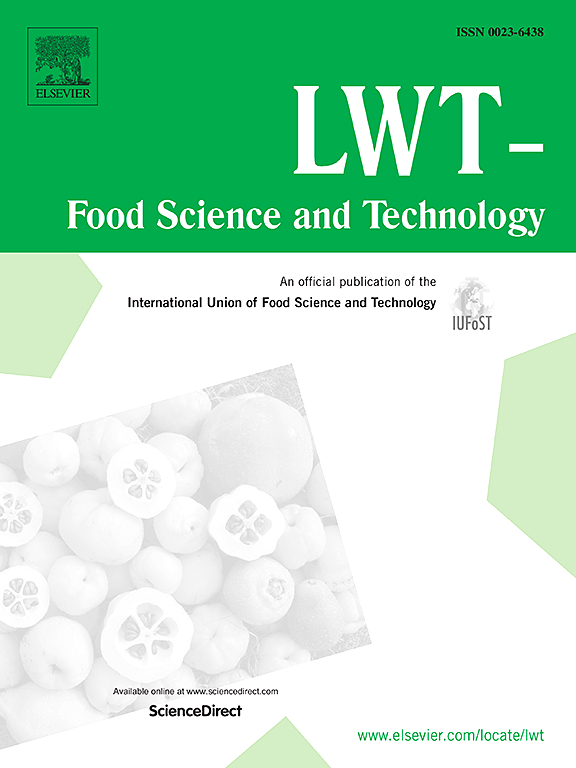Impact of cinnamaldehyde nanoemulsion on Listeria monocytogenes biofilms on broth-treated food contact surfaces
IF 6
1区 农林科学
Q1 FOOD SCIENCE & TECHNOLOGY
引用次数: 0
Abstract
Listeria monocytogenes (L. monocytogenes) is a foodborne pathogen that forms biofilms, causing persistent contamination and health risks. Cinnamaldehyde nanoemulsion (CAN), a stable and broad-spectrum antimicrobial, was investigated for its effect on L. monocytogenes biofilms. CAN showed good stability with particle sizes below 200 nm. At 28 °C, L. monocytogenes biofilms were more prevalent than at 37 °C. CAN significantly inhibited L. monocytogenes, with an MIC of 0.5 mg/mL, and its bactericidal effect increased over time and with concentration, achieving over 90.0% inhibition and removal. CAN effectively removed L. monocytogenes biofilms on various food contact materials, especially stainless steel, with the highest removal rate reaching 82.4%. Broth treatment altered L. monocytogenes adhesion, reducing it on stainless steel and increasing it on plastics, suggesting CAN's suitability for stainless steel. Interestingly, the removal efficacy of CAN is substantially augmented under the influence of broth, with an increase of 1.0%–23.0% across materials. The adhesion and removal efficacy were linked to material hydrophobicity, with stainless steel showing more pronounced effects due to its relative hydrophilicity. These insights are crucial for developing more effective disinfection strategies for food contact surfaces.

求助全文
约1分钟内获得全文
求助全文
来源期刊

LWT - Food Science and Technology
工程技术-食品科技
CiteScore
11.80
自引率
6.70%
发文量
1724
审稿时长
65 days
期刊介绍:
LWT - Food Science and Technology is an international journal that publishes innovative papers in the fields of food chemistry, biochemistry, microbiology, technology and nutrition. The work described should be innovative either in the approach or in the methods used. The significance of the results either for the science community or for the food industry must also be specified. Contributions written in English are welcomed in the form of review articles, short reviews, research papers, and research notes. Papers featuring animal trials and cell cultures are outside the scope of the journal and will not be considered for publication.
 求助内容:
求助内容: 应助结果提醒方式:
应助结果提醒方式:


